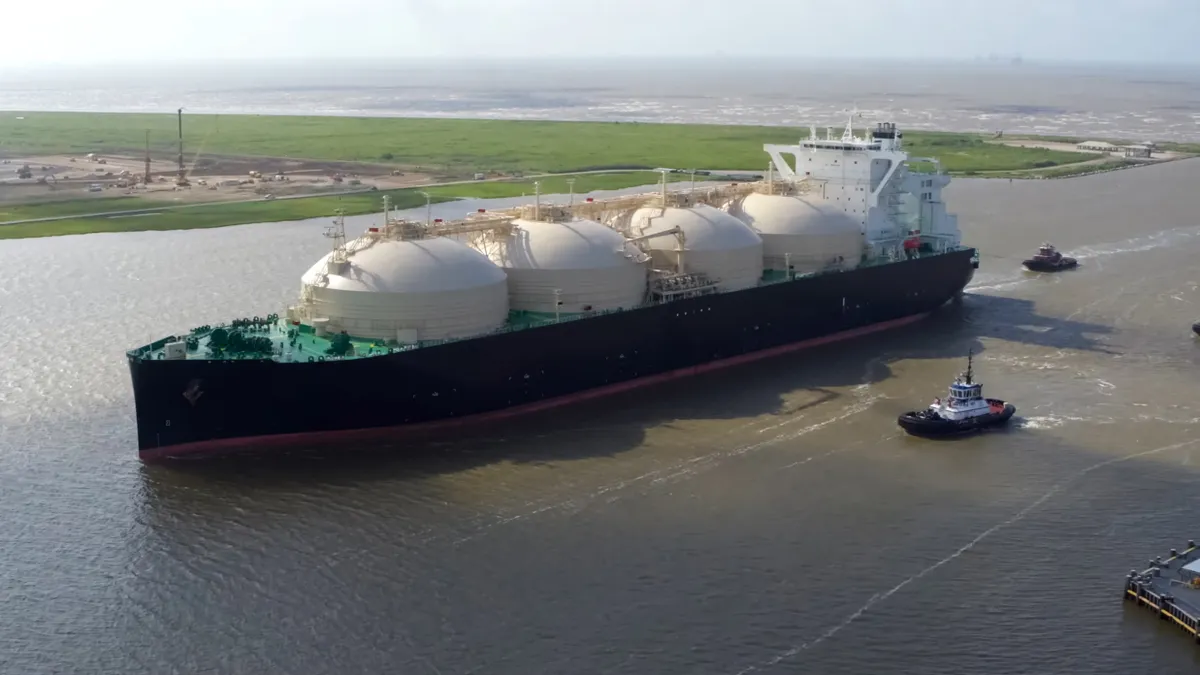Liquefied natural gas export projects being developed in Texas by NextDecade and Glenfarne Energy Transition cleared a major hurdle Friday when the Federal Energy Regulatory Commission revised its previous approval of them in response to a court order.
FERC included a social cost of carbon estimate for both projects and conducted additional analysis to consider how they would affect environmental justice communities around them as the U.S. Court of Appeals for the D.C. Circuit required in its August 2021 Vecinos decision.
The decisions in NextDecade’s $11.5 billion Rio Grande project and a related $2.4 billion, 135-mile pipeline, known as Rio Bravo, to be built by an Enbridge subsidiary and in Glenfarne’s Texas LNG project struck an “appropriate middle ground,” FERC Acting Chairman Willie Phillips said April 20 during the agency’s monthly meeting.
FERC Commissioner Allison Clements dissented, saying FERC should have prepared a supplemental environmental impact statement that would have given the public a chance to comment on the agency’s updated analysis. The decisions will spark additional litigation, possibly leading to delays, she said in similar dissents against the two decisions.
Opponents to the projects will likely ask FERC to reconsider its decisions in a required first step before appealing them in court, Nathan Matthews, a senior attorney with the Sierra Club, said Friday before the agency released its decisions.
In its decisions, FERC included social cost of carbon estimates for building and operating the planned facilities for “informational purposes,” but said it is useless in determining the significance of greenhouse gas emissions from a specific project.
“There are no criteria to identify what monetized values are significant for [National Environmental Policy Act] purposes, and we are currently unable to identify any such appropriate criteria,” FERC said.
FERC staff estimated the social cost of carbon for the Rio Grande terminal to be $20 billion and the cost for the Rio Bravo pipeline to be $2 billion. FERC staff pegged the social cost of carbon for the Texas LNG project at $2 billion. Those estimates satisfy NEPA’s requirement that the agency take a “hard look” at the projects’ greenhouse gas emissions, FERC said.
FERC expands scope of EJ review
In its updated environmental justice reviews, FERC staff expanded the scope of its analysis from a 2-mile radius around the planned LNG terminals to 50 kilometers, or about 31 miles. As a result, FERC assessed the impacts of the Rio Grande terminal and the Rio Bravo pipeline on 286 and 106 communities, respectively, up from four and 21 in the original analysis.
The projects’ effects would be “disproportionately high and adverse” for environmental justice communities because they would be predominately borne by them, FERC staff said. However, the projects are “environmentally acceptable,” staff said.
In a change from the original decisions, FERC required the Rio Grande and Texas LNG projects to monitor and mitigate their air emissions during construction and operations.
FERC has never had that requirement before, according to Phillips.
NextDecade plans to make a final investment decision in June and has acquired all other authorizations for its project, according to ClearView Energy Partners.
“This project is therefore poised to commence construction soon and project opponents may be more inclined to seek an injunction,” the research firm said Monday.
Glenfarne expects to make a final investment decision this year and begin commercial operations in 2027, the company said Monday.
Texas LNG is in discussions with potential LNG buyers in Europe and Asia, according to an early April report to the Department of Energy. “It is finding robust demand for LNG from the project and is actively progressing negotiations and documentation for commercial agreements with multiple counterparties,” the company said.
Separately, FERC late last week suspended its schedule for reviewing NextDecade’s plan to include carbon capture equipment at its facility, saying the company failed to adequately respond to data requests.
FERC’s growing focus on environmental justice comes amid a boom in U.S. liquefied natural gas exports, mainly from five facilities in Gulf Coast states. Five additional LNG export plants are under construction there and FERC has approved 10 more in the region, according to the agency. FERC is reviewing six projects and two are in the agency’s pre-application process.
Growing natural gas exports are putting upward pressure on U.S. prices, according to the Institute for Energy Economics and Financial Analysis.
“All told — adding up all the projects that exist or are in the permitting process — the gas industry has plans to export half of America’s current gas production,” the group said Monday.
U.S. regulators should take a harder look at whether the gas exports are in the public interest, the group said.






















